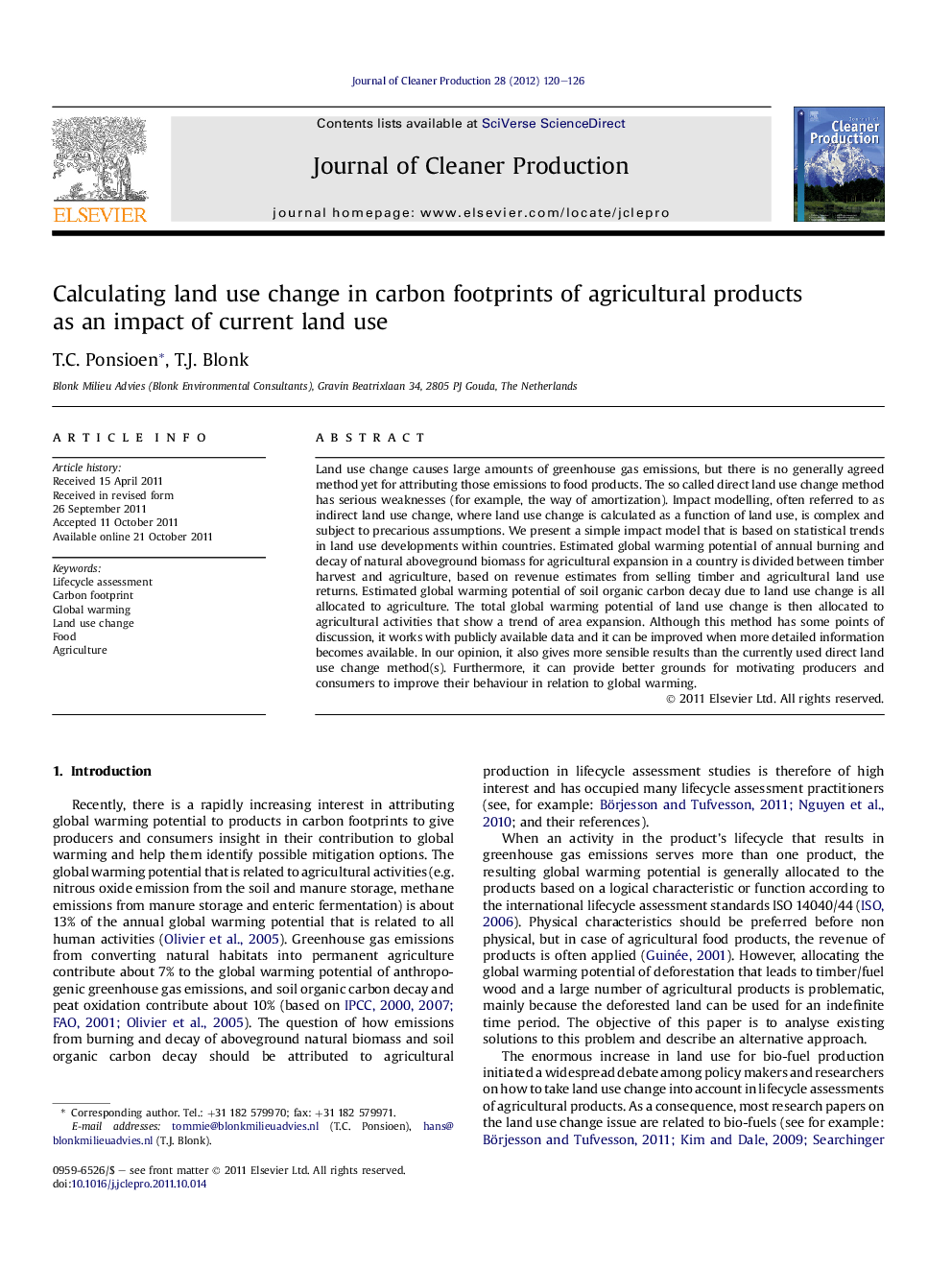| Article ID | Journal | Published Year | Pages | File Type |
|---|---|---|---|---|
| 1745719 | Journal of Cleaner Production | 2012 | 7 Pages |
Land use change causes large amounts of greenhouse gas emissions, but there is no generally agreed method yet for attributing those emissions to food products. The so called direct land use change method has serious weaknesses (for example, the way of amortization). Impact modelling, often referred to as indirect land use change, where land use change is calculated as a function of land use, is complex and subject to precarious assumptions. We present a simple impact model that is based on statistical trends in land use developments within countries. Estimated global warming potential of annual burning and decay of natural aboveground biomass for agricultural expansion in a country is divided between timber harvest and agriculture, based on revenue estimates from selling timber and agricultural land use returns. Estimated global warming potential of soil organic carbon decay due to land use change is all allocated to agriculture. The total global warming potential of land use change is then allocated to agricultural activities that show a trend of area expansion. Although this method has some points of discussion, it works with publicly available data and it can be improved when more detailed information becomes available. In our opinion, it also gives more sensible results than the currently used direct land use change method(s). Furthermore, it can provide better grounds for motivating producers and consumers to improve their behaviour in relation to global warming.
